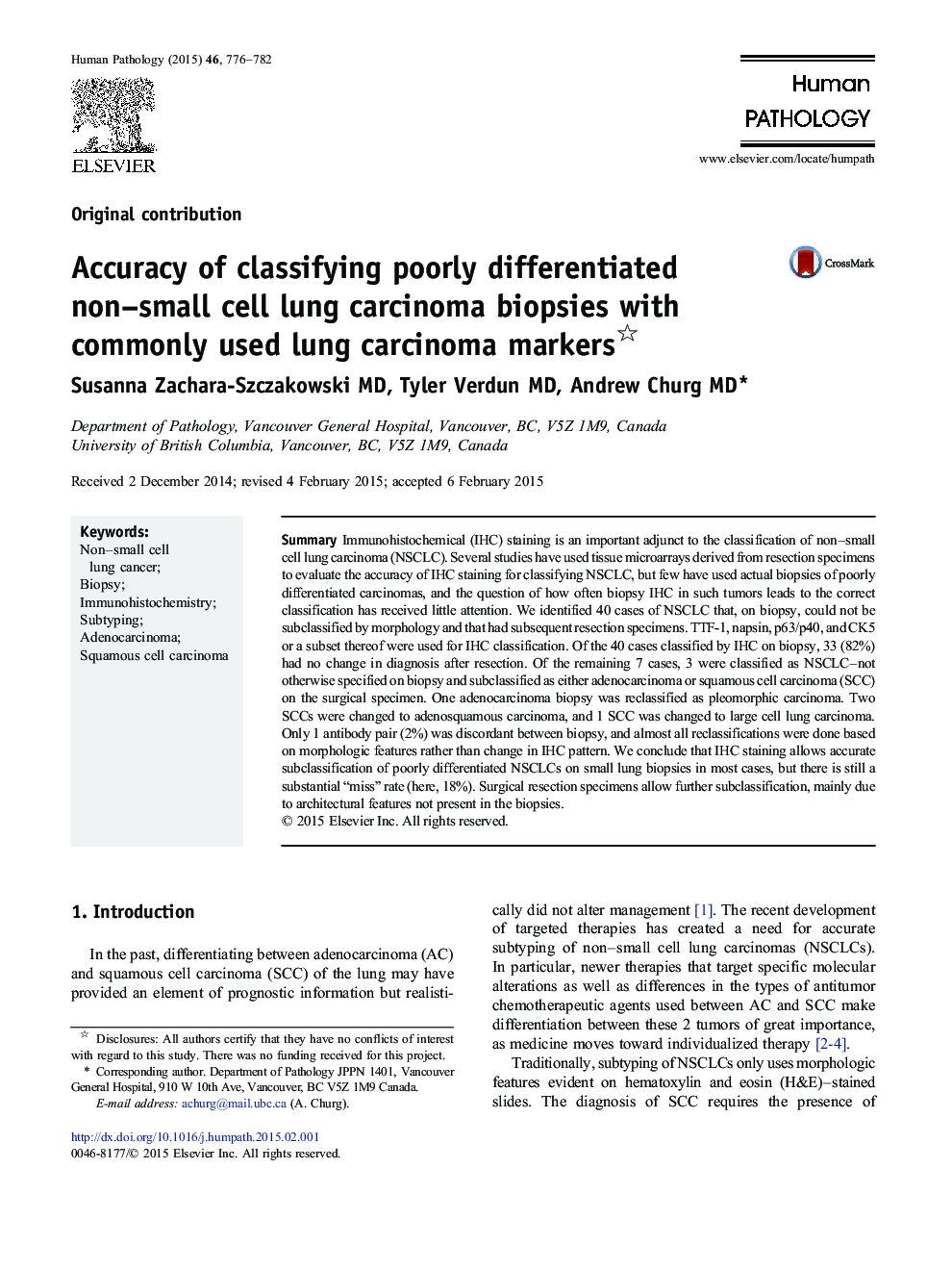| Article ID | Journal | Published Year | Pages | File Type |
|---|---|---|---|---|
| 4132677 | Human Pathology | 2015 | 7 Pages |
SummaryImmunohistochemical (IHC) staining is an important adjunct to the classification of non–small cell lung carcinoma (NSCLC). Several studies have used tissue microarrays derived from resection specimens to evaluate the accuracy of IHC staining for classifying NSCLC, but few have used actual biopsies of poorly differentiated carcinomas, and the question of how often biopsy IHC in such tumors leads to the correct classification has received little attention. We identified 40 cases of NSCLC that, on biopsy, could not be subclassified by morphology and that had subsequent resection specimens. TTF-1, napsin, p63/p40, and CK5 or a subset thereof were used for IHC classification. Of the 40 cases classified by IHC on biopsy, 33 (82%) had no change in diagnosis after resection. Of the remaining 7 cases, 3 were classified as NSCLC–not otherwise specified on biopsy and subclassified as either adenocarcinoma or squamous cell carcinoma (SCC) on the surgical specimen. One adenocarcinoma biopsy was reclassified as pleomorphic carcinoma. Two SCCs were changed to adenosquamous carcinoma, and 1 SCC was changed to large cell lung carcinoma. Only 1 antibody pair (2%) was discordant between biopsy, and almost all reclassifications were done based on morphologic features rather than change in IHC pattern. We conclude that IHC staining allows accurate subclassification of poorly differentiated NSCLCs on small lung biopsies in most cases, but there is still a substantial “miss” rate (here, 18%). Surgical resection specimens allow further subclassification, mainly due to architectural features not present in the biopsies.
